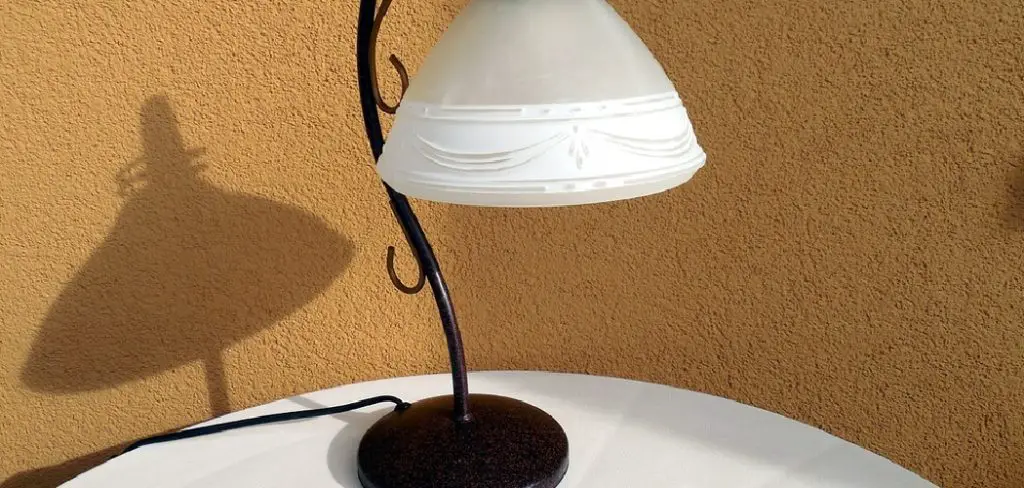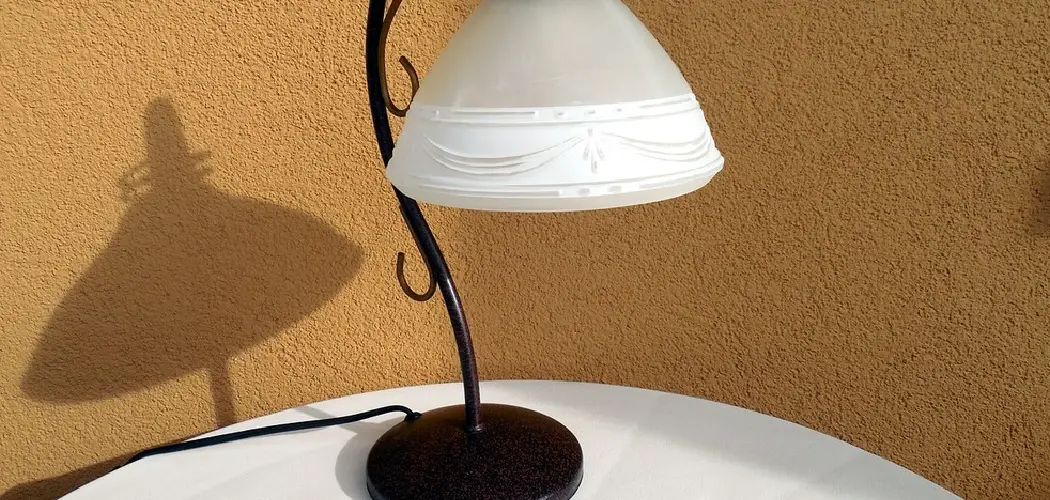Creating a ceramic lamp is a rewarding process that combines craftsmanship with creativity. Whether you are new to ceramics or an experienced artisan, making a ceramic lamp allows you to personalize your home decor with a functional piece of art. This process involves molding clay, firing it in a kiln, and assembling the lamp components to bring your vision to life.

With the right tools and guidance, you can craft a lamp that is both unique and practical, adding a warm glow to any space. In this blog post, we’ll walk you through the steps on how to make a ceramic lamp so that you can get back to using it in no time! So grab your tools, and let’s get started!
The Appeal of Handmade Ceramic Lamps
Handmade ceramic lamps have a distinct charm that sets them apart from mass-produced lighting options. Each piece carries the mark of the artisan, showcasing unique imperfections and textures that highlight the craftsmanship behind the creation. These lamps not only provide functional lighting but also serve as elegant decor pieces that can enhance the aesthetic of any room. Their earthy materials and organic designs often evoke a sense of warmth and comfort, creating a cozy atmosphere in your living space. Furthermore, opting for a handmade ceramic lamp supports local artisans and sustainable practices, making it a thoughtful and rewarding addition to your home.
Tools and Materials Needed
To create a handmade ceramic lamp, several tools and materials are essential for the process. First, you will need high-quality clay as the primary material, along with pottery tools such as a pottery wheel, carving tools, and shaping sponges. A kiln is crucial for firing the clay and transforming it into a durable ceramic piece. Glazes in various colors and finishes are needed to add the desired aesthetic to the lamp.

Additionally, you will require electrical components such as a lamp kit, which includes a socket, wiring, and a plug to complete the functionality of the lamp. Sandpaper and brushes are also useful for smoothing surfaces and applying glaze with precision. With these tools and materials, you can craft a unique and elegant ceramic lamp for your home.
10 Methods How to Make a Ceramic Lamp
1. Plan Your Design and Choose the Right Clay
Before getting your hands dirty, take time to plan the design of your ceramic lamp. Consider the lamp’s height, width, and shape—do you want a tall, slender form or a stout, rounded base? Think about your decor and where the lamp will sit. Once the concept is sketched, select a clay body suited to your vision. Stoneware or porcelain are popular for lamp bases due to their strength and elegant finish, but earthenware can also work for more rustic aesthetics.
Make sure to choose a clay that is compatible with your chosen glaze and firing temperature. At this stage, it’s also smart to decide how the electrical components will be incorporated so you can accommodate them during shaping.
2. Create the Base Using a Pottery Wheel or Hand-Building Techniques
With your clay ready, it’s time to shape the lamp base. If you’re skilled with a pottery wheel, you can throw a symmetrical cylinder or bottle-shaped form. Alternatively, use hand-building techniques like coiling or slab construction for more sculptural or asymmetrical designs.

Regardless of the method, ensure the bottom remains level and the interior hollow, as space is needed for the lamp wiring. Use a template or measuring stick to keep the size uniform. Leave a centered hole in the base for the cord, or plan to drill one later after the clay is bisque-fired. Smooth out imperfections with a rib or sponge, and don’t forget to pierce small air holes if your base is fully enclosed.
3. Allow the Clay to Dry Slowly and Evenly
Drying is a crucial step in ceramic work that requires patience. After forming your base, cover it loosely with plastic to allow slow, even drying over several days. Rapid drying can cause cracks or warping, especially on thicker forms. Monitor the drying process and rotate the piece occasionally to ensure uniform air exposure. Once the piece reaches the leather-hard stage (firm but still slightly pliable), you can refine the surface further with trimming tools, create texture, or carve in decorative details. After it’s completely bone dry—when the clay feels chalky and room-temperature—it’s ready for bisque firing.
4. Bisque Fire the Lamp Base in a Kiln
Bisque firing transforms the fragile, dried clay into a hardened ceramic, making it easier to handle and glaze. Carefully load your lamp base into a kiln, supporting it properly to avoid tipping. Fire it slowly to around cone 04 (approximately 1940°F or 1060°C), depending on your clay type.
This initial firing removes all remaining moisture and burns out organic materials, leaving a porous surface ideal for absorbing glaze. After the bisque firing, inspect your piece for any cracks or flaws. At this point, you can drill a hole in the base for wiring if you didn’t incorporate one during shaping.
5. Glaze or Decorate the Ceramic for Your Desired Finish
Now it’s time to add color and surface design. Choose a glaze that complements your home’s style—glossy, matte, speckled, or transparent. Apply it by dipping, brushing, or spraying, depending on the look you want and the glaze’s consistency. Make sure to leave the bottom unglazed or use kiln stilts to prevent the piece from sticking during the glaze firing. If you’re feeling adventurous, experiment with wax resist, layering, or sgraffito techniques. Keep in mind that the final appearance can change dramatically during firing, so test your glazes beforehand if possible.

6. Glaze Fire to Maturity for a Durable Finish
Once your lamp base is glazed, it must be glaze-fired to the appropriate cone for your specific clay and glaze combination—typically cone 5 or cone 6 for stoneware. Carefully load the kiln again, this time ensuring glazes won’t run and stick to the shelves. Fire the kiln slowly to allow even heating, then allow it to cool fully before unloading. The finished ceramic will now be waterproof and beautifully colored. After firing, clean the surface with a damp cloth to remove any dust or glaze particles before moving on to assembly.
7. Drill or Refine the Hole for Wiring Access
If your lamp base didn’t already include a hole for the electrical cord, now’s the time to drill one. Use a diamond drill bit and keep the drill bit and ceramic surface wet to prevent cracking. Drill slowly and steadily near the base’s bottom, angling slightly downward. You’ll also want to ensure there’s space for the lamp rod to pass through the center. If the ceramic is very thick, a longer drill bit or hollow coring bit may be needed. After drilling, gently file any sharp edges to protect the cord and prevent fraying over time.
8. Assemble the Lamp Hardware Securely
With the ceramic body complete, you can now add the lamp components. Most hardware kits include a threaded rod, socket, harp, finial, and plug. Begin by inserting the rod through the lamp’s center hole and securing it with washers and a locknut. Thread the cord through the rod and out the bottom. Connect the wires to the socket according to the kit instructions—usually one wire goes to the brass screw (hot) and the other to the silver (neutral). Tighten all components and test the wiring before installing the bulb. Choose a socket and bulb that suit your lamp’s intended use—standard, 3-way, or dimmable.
9. Add a Felt Base or Rubber Pads for Stability and Protection
To finish off the lamp and prevent it from scratching your furniture, apply a felt pad or rubber feet to the bottom. If you recessed the base slightly when shaping it, you may be able to glue a circular felt insert directly into the base. This also helps conceal any exposed wires or nuts.

Choose a color that blends with your glaze or surface for a subtle look. A well-finished bottom also prevents wobbling and gives the lamp a professional, completed appearance.
10. Choose a Lampshade and Display Your Handmade Piece
The final touch is selecting the perfect lampshade to complement your handmade ceramic base. Consider proportions—too large and it may overwhelm the base; too small and it may look disproportionate. Neutral shades work well for bold ceramic colors, while patterned or textured shades can add personality to a minimalist base. Once assembled, place your new ceramic lamp in its intended location and admire your craftsmanship. A handmade ceramic lamp is more than just functional—it’s a personal piece of art, glowing with warmth and character.
Conclusion
Creating a handmade ceramic lamp is a rewarding project that combines creativity and functionality. From shaping the base to selecting the perfect shade, every step allows for personal expression and thoughtful design. By taking the time to craft something unique, you not only produce a practical lighting solution but also a meaningful piece of decor that tells a story. Thanks for reading, and we hope this has given you some inspiration on how to make a ceramic lamp!

